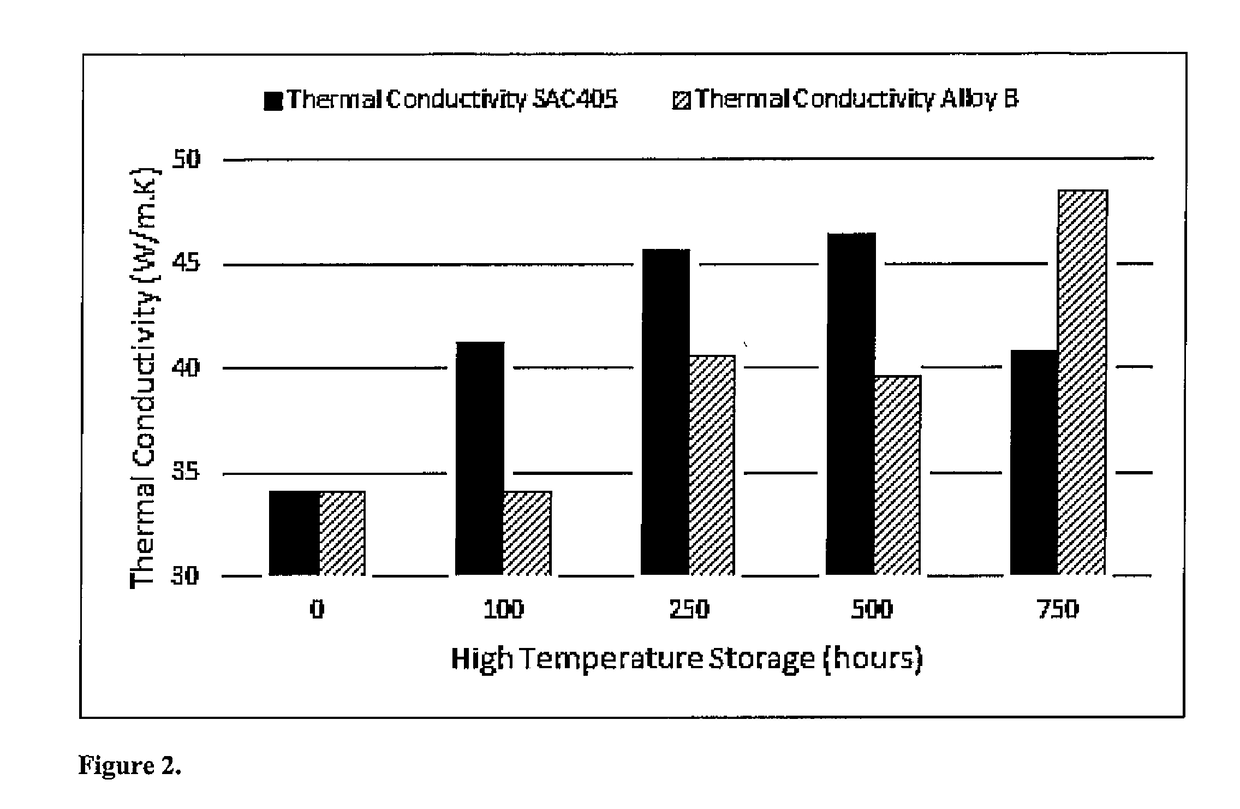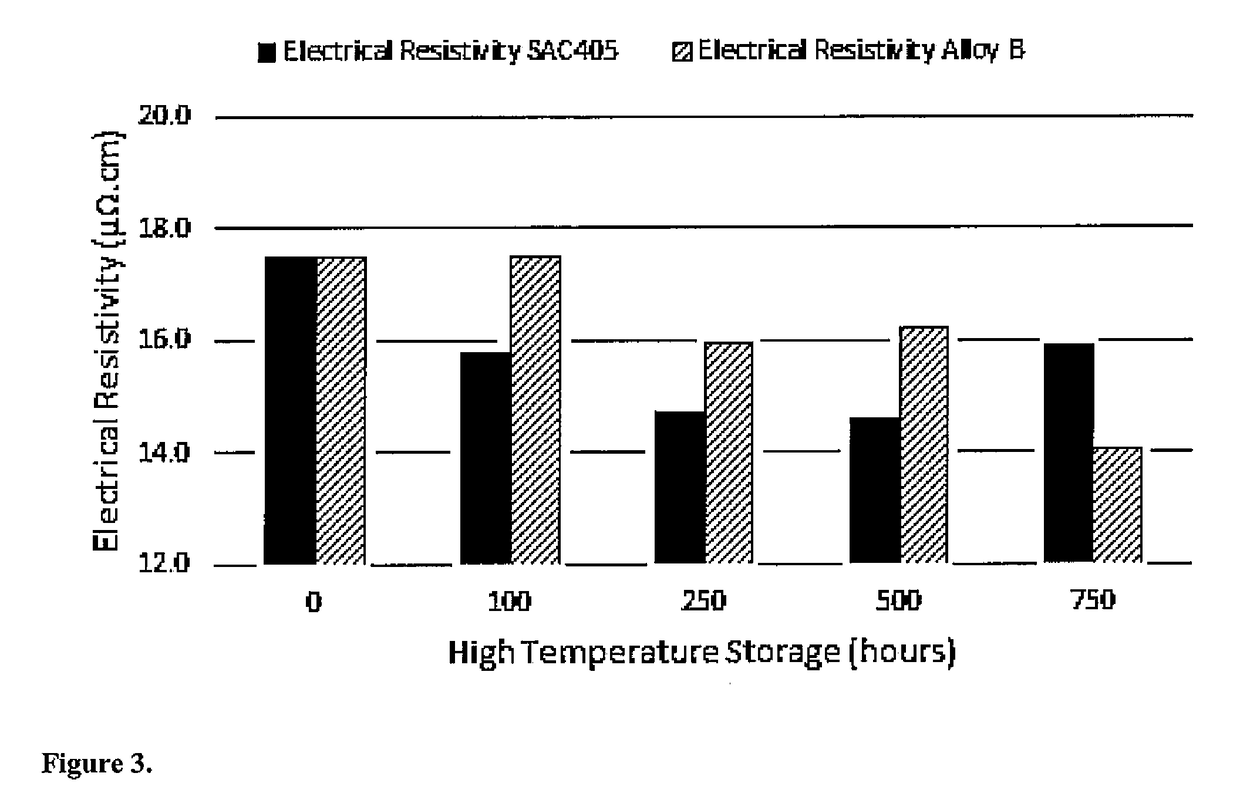Advanced Solder Alloys For Electronic Interconnects
a technology of electronic interconnections and alloys, which is applied in the direction of welding/cutting media/materials, manufacturing tools, and soldering apparatus, etc., can solve the problems of generating a lot of heat which needs to be dissipated, the alloy of snag3.0cu0.5 cannot perform well at such temperatures, and the stress fracture of the stressed joint is too early to achieve the effect of improving fatigue life, improving thermal properties, and improving electrical properties
- Summary
- Abstract
- Description
- Claims
- Application Information
AI Technical Summary
Benefits of technology
Problems solved by technology
Method used
Image
Examples
Embodiment Construction
[0095]The invention relates to micro level additions to solder alloys to engineer the electrical and thermal properties for use in the manufacture of electronic components and devices, as well as in electronic assembly and packaging.
[0096]The novel solder alloys allow for improved electrical properties in addition to improved thermal fatigue life of the die attach layer. The invention results in lower contact resistance in a die attach layer, lower change in contact resistance during operation and aging of the die attach layer, and higher efficiency of LEDs, especially during high power operation.
[0097]The engineered microstructure of finer IMC particles in the solder alloy allows for more uniform distribution of the particles compared to SAC alloys. The smaller size of bulk IMCs and their uniform distribution lowers the electronic scattering at interface between IMCs and the adjoining layers.
[0098]The engineered microstructure allows for slower growth of bulk IMCs, controlled inter...
PUM
| Property | Measurement | Unit |
|---|---|---|
| melting point | aaaaa | aaaaa |
| temperature | aaaaa | aaaaa |
| temperature | aaaaa | aaaaa |
Abstract
Description
Claims
Application Information
 Login to View More
Login to View More - R&D
- Intellectual Property
- Life Sciences
- Materials
- Tech Scout
- Unparalleled Data Quality
- Higher Quality Content
- 60% Fewer Hallucinations
Browse by: Latest US Patents, China's latest patents, Technical Efficacy Thesaurus, Application Domain, Technology Topic, Popular Technical Reports.
© 2025 PatSnap. All rights reserved.Legal|Privacy policy|Modern Slavery Act Transparency Statement|Sitemap|About US| Contact US: help@patsnap.com



